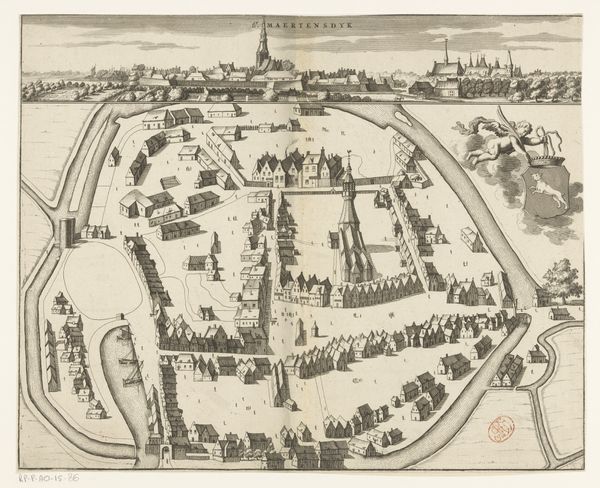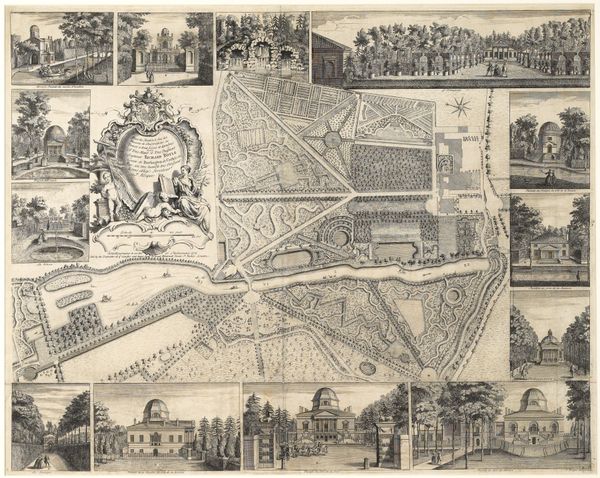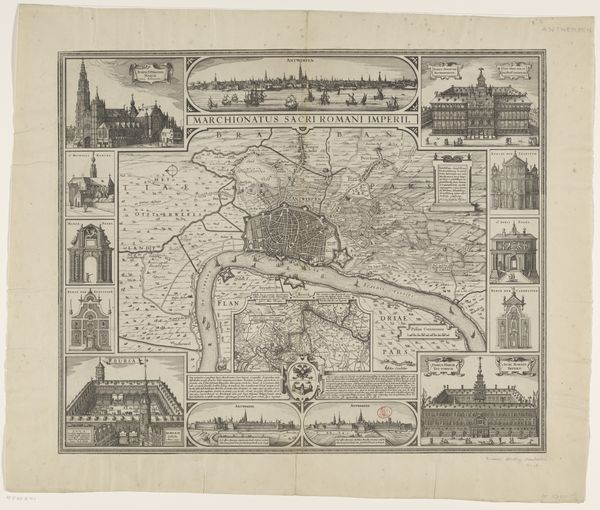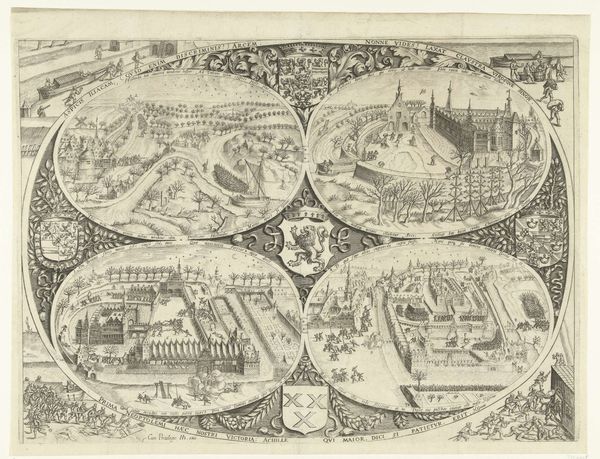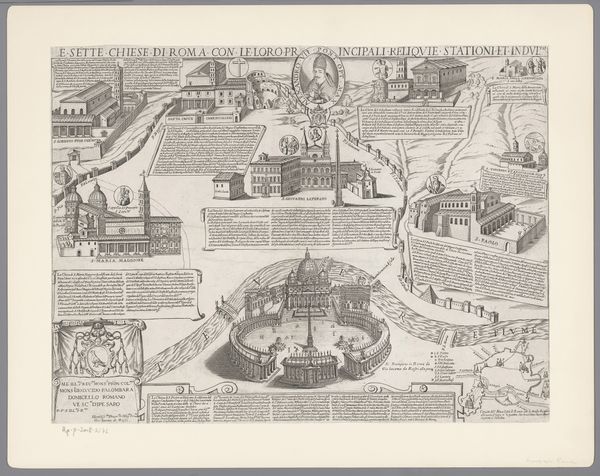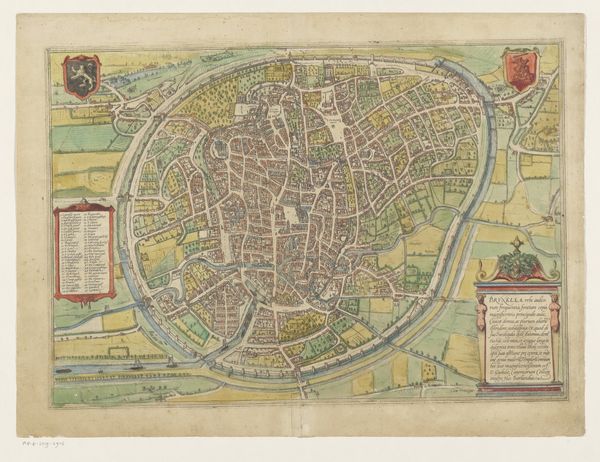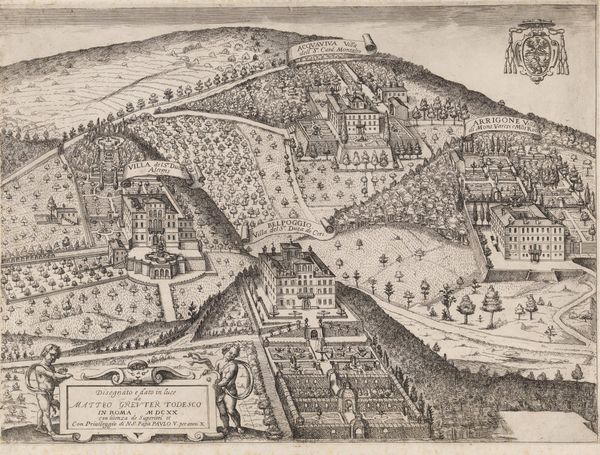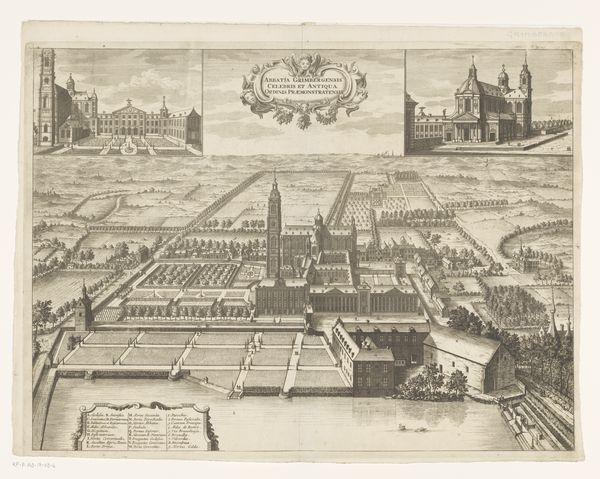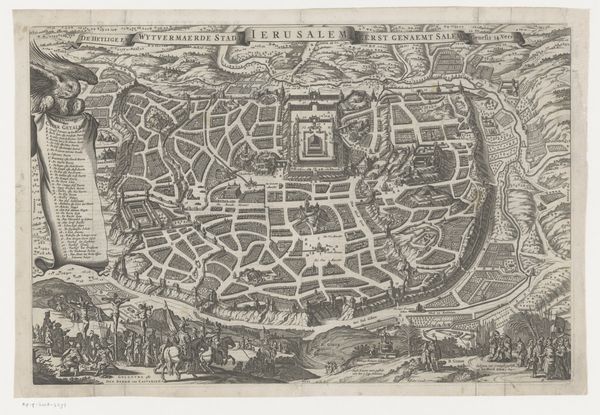
print, etching, poster
# print
#
etching
#
cityscape
#
genre-painting
#
poster
Dimensions: height 465 mm, width 682 mm
Copyright: Rijks Museum: Open Domain
Editor: Here we have “Tentoonstellings spel,” or “Exhibition Game,” by the Koster Brothers from 1883, it is an etching on a poster print, housed at the Rijksmuseum. It has a peculiar design – almost like a board game with different vignettes. What do you make of it? Curator: This work really speaks to the late 19th-century fascination with exhibitions, reflecting the rising popularity of world’s fairs as platforms for cultural exchange and national self-representation. Consider the architecture depicted in the center. Editor: You mean that building in the middle? The game revolves around this depiction of a monumental exhibition hall. Is that what the game would have been about? Visiting the exhibits? Curator: Precisely. Think of this not just as a game, but also as a promotional tool and a cultural artifact. The Gebroeders Koster were savvy businessmen. But consider how these games helped shape public perceptions of progress, industry, and even colonialism, as objects from various parts of the world were displayed at these exhibitions. What stories do you think were left untold by this sort of public presentation? Editor: That’s a good question! I suppose that there were untold stories, like the conditions behind producing the wares at each stall or the people making them, out of view. Looking at the details within each space, they show very picturesque scenes of progress but it can only be a surface-level glimpse. Curator: Indeed. By examining popular imagery like this, we uncover how exhibitions weren’t neutral spaces, but rather arenas where national and colonial narratives were carefully constructed. Editor: I hadn't thought of a board game as something so revealing about the social forces at play! It seems like a playful way to digest complex issues of identity, progress and global power. Curator: Absolutely. It highlights the crucial role of visual culture in shaping and reflecting the socio-political landscape of its time.
Comments
No comments
Be the first to comment and join the conversation on the ultimate creative platform.
